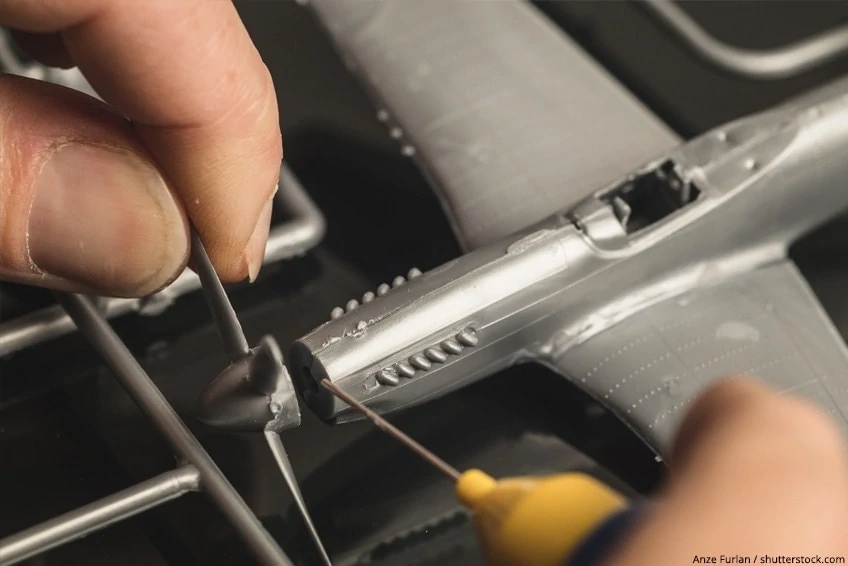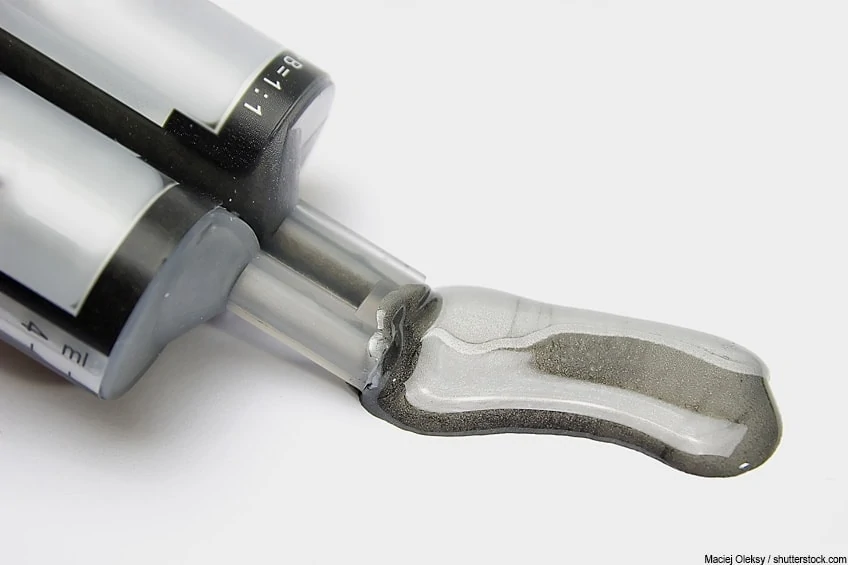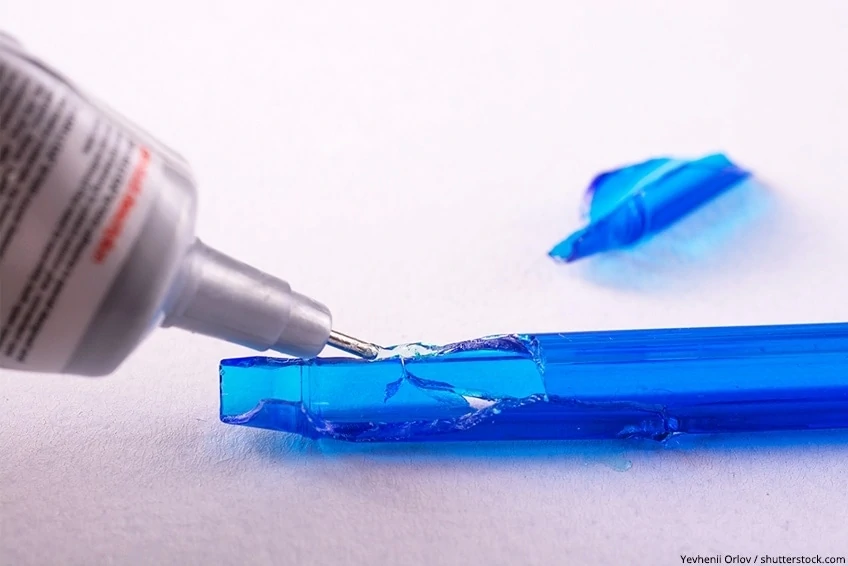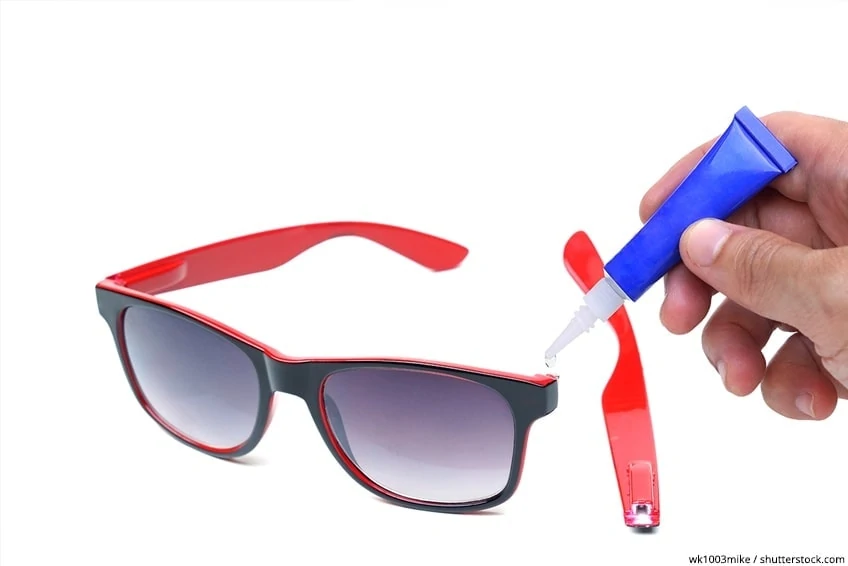Best Glue for Polypropylene – A Guide to the Best Glue for Plastics
This post may contain affiliate links. We may earn a small commission from purchases made through them, at no additional cost to you. You help to support resin-expert.com
There are materials that are quick and easy to glue. And then there is polypropylene (PP). The question quickly arises for the user: What can PP be bonded with? What exactly makes it so difficult to join PP plastic in a really durable and stable way? Which PP adhesive should you use for this purpose? We will reveal the answers to these questions and more in this polypropylene adhesive guide.
Table of Contents
What Is Polypropylene?
Polypropylene, in short PP, was synthesized by Karl Rehn in the fifties of the 20th century. At the same time, Giulio Natta also discovered the advantages of this material. PP has been produced industrially in larger batches since 1957.
It is a thermoplastic material belonging to the groups of polyolefins. This means that PP plastic can be formed at higher temperatures. At room temperature or generally low temperatures, PP has material properties that are highly useful for many users:
- High chemical resistance
- High surface hardness
- High strength and stiffness
- Lower environmental impact compared to other plastics
- Good recyclability
In addition, it is weldable, odorless, and well-tolerated by the skin, making it ideal for a wide range of applications. PP plastic is also very popular in industrial settings.
This thermoplastic can be processed by various methods, including deep drawing, extrusion, welding, blow molding, injection molding, and hot forming. PP is also very well suited for machining and foam production.
Various mineral fillers such as glass fibers, chalk, or talc can be added to the PP for greater stability, resulting in a wide range of applications for this thermoplastic material.
Where Is PP Used?
The positive material properties of polypropylene are so diverse that this material enjoys great popularity not only in industrial processing, but also among home users. Among other things, it is used:
- In vehicle, machine and aircraft construction
- In civil engineering
- In electrical engineering
- In the consumer industry
- In the pharmaceutical industry
- In the food industry
The range of applications is very broad. Among other things, PP is used to produce:
- Interior linings for various household appliances
- Cable and wire sheathing
- Transformer housings
- Sheet goods and injection molded parts
- Yogurt and disposable cups
- Shoe heels
- Closures for bottles
- Interior linings for passenger cars and crash absorber elements
Why Is Polypropylene Gluing So Difficult?
Polypropylene bonding is a very complicated process. Although plastics offer the user many advantages, a serious disadvantage is their extremely low density and thus very low surface tension, especially in comparison with metals. In addition, the wetting behavior is completely different.
Due to the low surface energy and the poor wettability, it is hardly possible to bond polypropylene. The latter, in fact, ensures that liquids, even those with high viscosity, simply flow off instead of remaining in place. This applies not only to water, but also to adhesives and paints. This can be compared to the lotus effect. Therefore, both the selection of the right PP adhesive and optimum surface pre-treatment are of essential importance.
Incidentally, the surface tension of a material can be determined with the aid of the water drop test. Water, or alternatively ink, is applied to the surface. If the liquid contracts instead of wetting the surface completely, then this is a low-energy outer surface.
But what can you use to bond PP? We present a selection of adhesives with which you can bond not only PP, but also polyethylene(PE), whose adhesive properties are generally comparable.
Gluing Polypropylene With a Two-Component Adhesive
Two-component adhesives are also known as reactive adhesives. They are based on epoxy resin, polyurethane or methyl methacrylate. The special feature is the two components of this system. In the case of epoxy resin adhesives, these are the epoxy resin and a hardener.
Both components are added together in a specific mixing ratio and enter into a chemical reaction with each other. The optimum mixing ratio is of essential importance here, because if this is not correct, insufficient curing takes place – the adhesive seam can peel off again.
As a rule, two-component epoxy resin adhesives are solvent-free. Especially for bonding larger surfaces, the epoxy adhesive is the method of choice. A primer can be applied beforehand, but it does not have to be.
Advantages:
Two-component epoxy resin adhesives have many advantages:
- Short processing time
- Fast curing phase (solid hand strength occurs after a few minutes)
- Can bond to many different materials to and among each other
- Optimal impact and shear strength
- Viscoplastic adhesive means it is suitable for flexible joints
Recommendation: J-B WELD Plastic Bonder Structural Adhesive Syringe
This two-part urethane-based adhesive works as both a binder and gap filler, leaving behind a strong and lasting bond to a multitude of surfaces, including plastic. The syringe format allows for a simple 1:1 mixing ratio and comes with a re-sealable lid that stops the product from drying or leaking out, thus allowing for several uses.
To use this product, simply mix the two components together thoroughly on the provided mixing tray with a stick. You will have 15 minutes to work with the epoxy liquid before it begins to set, after which time it will require 30 hours to cure properly. The final finish boasts a tough, permanent tan-colored bond that will last indefinitely.
- Quick-setting and multipurpose two-part urethane adhesive
- Gap filling system provides a strong and lasting bond
- Takes 15 minutes to set and 30 hours to cure
Depending on the nature of your PP surface, you may need an additional adhesion promoter to ensure good adherence.
Acrylic Adhesive for Polypropylene
Acrylic adhesives for polypropylene and polyethylene bonding, like epoxy resin adhesives, are based on two components. These are also mixed together and enter into a high-strength reaction with each other. Acrylic adhesives also offer the advantage of being able to bond plastics without prior surface treatment with a primer.
In addition to PP and PE, acrylic adhesives bond various other plastics, such as PMMA or ABS. Materials such as metals and metal alloys, wood, ceramics and stone are also bonded together with high strength.
Advantages:
Two-component acrylic adhesives offer the following advantages:
- Bonds low-energy materials without prior surface treatment
- Acrylate adhesives offer high water resistance as well as good impact and shear strength
- Optimal UV resistance
- Good resistance to chemicals, temperature, and aging
- Short and simple process
- Good hand strength after a short time; final strength is extremely high
Recommendation: J-B WELD High Strength Plastic Bonder
This plastic bonder by J-B Weld offers durable and long-lasting repairs to your plastic surfaces. It has a simple 1:1 mixing ratio, and will set quickly within 15 minutes, and can even be sanded within just half an hour. This product has a high tensile strength of 3770 psi and will cure to a hard, permanent tan-colored bond.
- Quick-setting two-part urethane adhesive system
- Provides strong and lasting repairs
- Simple 1:1 mixing ratio and sets in 15 minutes
Since the adhesive contains acrylic, it should only be used outdoors or in well-ventilated work areas. A respiratory mask as well as protective goggles and disposable gloves are recommended when working.
Superglue as a Polypropylene Adhesive
Cyanoacrylate adhesive, also known as instant adhesive, is a one-component adhesive that not only has a very high final strength but also an extremely short curing time. Processing is extremely simple. After thorough surface cleaning and priming, the adhesive is applied thinly but in sufficient quantity and the two substrates are joined with short, high pressure.
Cyanoacrylate adhesive cures instantly. This applies to bonding almost all materials including PP, PE, ABS, metals, stone, wood, ceramics, porcelain, rubber, leather, and many others. Moreover, cyanoacrylate adhesive has a solid gap-filling capacity and is ideally suited for porous materials.
Advantages:
The advantages of superglue are the following:
- Cures very quickly
- Solid tensile and shear strength
- Free of solvents
- Perfect for small areas
- Application is easy and clean
Recommendation: LOCTITE Super Glue Plastics Bonding System
Loctite’s superglue is formulated specially for tough-to-bond plastics. While most superglues do not require two parts, this particular product includes both a primer and activator to ensure maximum adherence to your PP plastic surface. This product involves a two-part system, where you will first apply an activator, a minute after which you will then apply the superglue. Just one drop will result in great strength and a permanent bond, and the slanted felt tip of the applicator allows for precision, making it great for smaller or more detailed items.
- Two-part system with activator to prime the surface
- Develops tremendous strength with just one drop
- Slanted felt tip for precision
The only disadvantage to this product is its limited shelf life; it cannot be stored and used again later, as the contents tend to dry up as a result of poor cap design.
How to Glue Polypropylene
For PP bonding, prior surface treatment is of great importance. When using modern adhesives such as two-component acrylate or epoxy resin adhesives, the application of a primer is not a must, but it definitely does no harm. Alternatives to this are pickling or corona discharge. However, these are difficult to apply for the home user. Moreover, pickling is considered to be somewhat harmful.
Furthermore, the surface must be free of all chemical substances such as grease and oil as well as dust and dirt. Clean the surfaces of the substrates thoroughly with isopropanol and a lint-free cloth, and apply a primer or activator if necessary.
Now, apply the adhesive according to the manufacturer’s data sheet. This can be done on one or both sides, depending on the adhesive used. Join the two substrates and fix them together if necessary. This step is particularly important with smooth materials such as PP, as otherwise the substrates could shift before the adhesive has fully cured. Immediately pick up any leaked adhesive with a paper towel or lint-free cloth.
Observe the curing time according to the manufacturer’s instructions and rather give the substrates more time than too little.
Tips and Tricks for Gluing Polypropylene
It is no coincidence that the development of PP adhesives is a highly promising branch of industry. PP is one of the most popular plastics, which means that PP bonding is also becoming increasingly popular. To make this easier for you, we have listed some professional tips on PP bonding below.
- We recommend that you use products from market leaders. This is because market leaders for the development of technical adhesives usually specialize in plastics, as they are aware of the difficulties that the joining of PP and PE offer. This way, you can be sure that the bonding process will be successful and that a really stable adhesive seam will be created.
- Caution is advised with pressure-sensitive adhesives. Although these are often offered explicitly for bonding low-energy plastics, they generally remain tacky and do not cure completely. This means that there is no permanent bonding, but it can be detached again at any time.
- In addition to bonding, gentle heating of the substrate surfaces can sometimes provide relief. Here, you apply heat to the thermoplastic so that it dissolves. Now, the substrates can be bonded together without adhesive.
- However, a special heat gun or alternatively a welding rod is required for this application. As with bonding, it is also possible to seal cracks in the substrate surface. However, care must be taken with this technique, as inexperienced users may deform the substrates or heat them up too much.
- Superglues used for PP or PE promise a very short curing time; however, they take much longer for the materials mentioned above. If you want to achieve a truly permanent bond, you should expect a curing phase of up to 24 hours.
Inform yourself in advance about occupational safety when bonding PP and PE. If possible, use a respirator as well as protective goggles and disposable gloves. If you are prone to allergic reactions to latex, it is better to use nitrile gloves.
Frequently Asked Questions
Which Adhesive Sticks to PP?
Special adhesives are required for PP, either two-component adhesives based on epoxy resin or acrylate, or cyanoacrylate adhesives, which are so-called instant adhesives. Recommended, but not a must, is the prior application of a primer.
How Do I Recognize PP or PE?
There are various methods for this, either by scoring with the fingernail or by the burning test. The fingernail test produces a crack in PP or PE, as these are soft plastics. When PP burns, not only does it produce a paraffin-like odor, but also a bright flame with a bluish core.
Is Polypropylene Safe?
PP is generally considered to be harmless, as it is also used in the food industry. As a rule, plasticizers are also not used for PP. However, care should be taken with containers used for freezing food, as these could contain harmful plasticizers.
Gluing PP is difficult, but not impossible if you know how to do it and what you should pay special attention to. We hope that we have been able to help you with our tips on PP and PE bonding.









